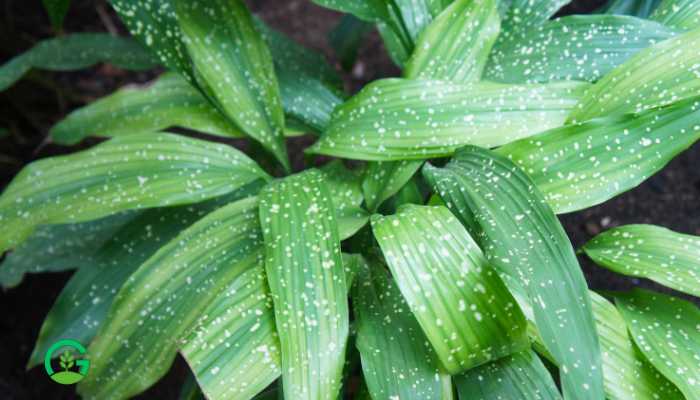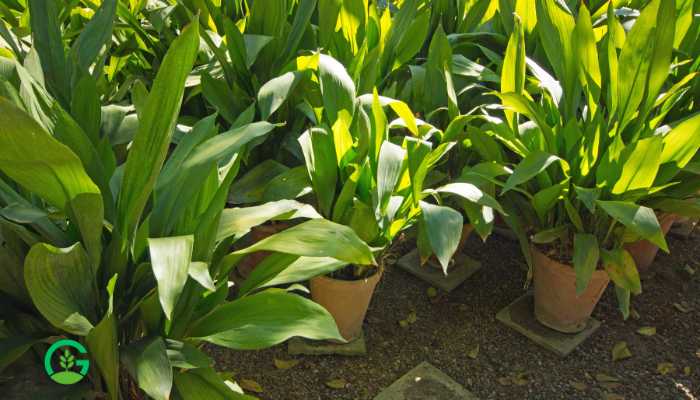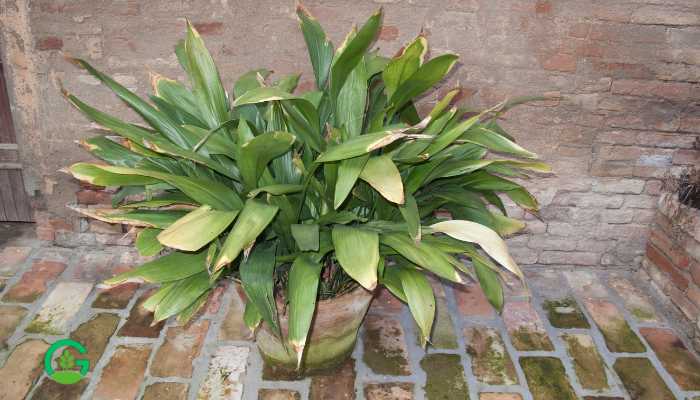Are you looking for a low-maintenance, resilient plant to brighten up your home or garden? The Cast Iron Plant may be exactly what you need.
Known for its hardy nature and beautiful, lush foliage, this plant can thrive even in conditions where many other plants would wither. Let’s learn the essentials of growing and caring for this remarkable plant.
Cast Iron Plant Table of Contents
What is a Cast Iron Plant?
The Cast Iron Plant, scientifically known as Aspidistra elatior, is famed for its ability to withstand neglect and poor growing conditions. It’s an evergreen perennial that originated in the forests of Japan and Taiwan, and it’s celebrated for its long, dark green leaves that add a touch of elegance to any setting. The name “Cast Iron” reflects its durability – much like the iron skillet in your kitchen, this plant is tough!
Choosing the Right Location
Choosing the right location for your Cast Iron Plant is crucial. Do you have a spot that doesn’t get much natural light? Perfect! Cast Iron Plants thrive in low light conditions. They are ideal for shady corners indoors or shaded areas in your garden. However, avoid direct sunlight as it can scorch their leaves.

Soil Requirements
For optimal growth, Cast Iron Plants prefer well-draining soil. A good potting mix that includes peat moss and perlite works well. Think of the soil as the foundation of a house; it needs to be solid and supportive, but also allow for proper drainage. Too much water can lead to root rot, so ensuring your soil drains well is key.
Planting Your Cast Iron Plant
When planting your Cast Iron Plant, whether in a pot or directly in the ground, make sure to place it at the same depth it was growing in its original container. Dig a hole that allows the roots to spread comfortably. After planting, water it thoroughly to help settle the soil around the roots.
Watering Guidelines
How often should you water your Cast Iron Plant? Less is more with this resilient plant. Water it once the top inch of soil feels dry to the touch. Overwatering can be more detrimental than underwatering. During winter months, reduce the watering frequency as the plant’s growth slows down.

Fertilizing Tips
Feeding your Cast Iron Plant isn’t complicated. Use a balanced, slow-release fertilizer during the growing season (spring and summer). A once-a-month feeding schedule should suffice. Think of fertilizing as giving your plant a vitamin boost; it helps them stay healthy and vibrant.
Pruning and Maintenance
Cast Iron Plants require minimal pruning. Remove any yellow or damaged leaves to keep the plant looking its best. Regularly cleaning the leaves with a damp cloth can also help keep pests at bay and ensure your plant looks fresh and shiny.
Dealing with Pests and Diseases
Although Cast Iron Plants are generally pest-resistant, they can occasionally attract spider mites or scale insects. Wipe the leaves with a solution of water and mild soap to combat these pests. If you notice signs of disease, such as leaf spots or blight, treat them with appropriate fungicides and ensure proper air circulation around the plant.
Propagation Methods
Want to expand your Cast Iron Plant collection? Propagation is simple through division. During the spring, gently remove the plant from its pot and separate the root clumps, ensuring each section has several leaves and roots. Replant these sections in fresh soil, and you’ll have new plants in no time.
Image | Product Name | Review | Price |
Common Problems and Solutions
Even hardy plants can face issues. If your Cast Iron Plant’s leaves turn yellow, it might be due to overwatering or poor drainage. Brown leaf tips can indicate low humidity or too much fertilizer. Adjusting your care routine can usually solve these problems quickly.
Cast Iron Plant Seasonal Care
While Cast Iron Plants are low-maintenance, a little seasonal care can go a long way. In winter, reduce watering and avoid fertilizing. In spring and summer, resume regular watering and feeding to support new growth. If you’re growing your plant outdoors, ensure it’s protected from frost.
Benefits of Growing Cast Iron Plant
Why choose a Cast Iron Plant? Besides its hardy nature, it’s excellent for improving indoor air quality. It’s also pet-friendly, making it a great choice for homes with animals. Plus, its lush foliage adds a touch of nature to your indoor or outdoor space, creating a calm and inviting atmosphere.
Read More
Indoor vs Outdoor Care
Cast Iron Plants can thrive both indoors and outdoors, but their care needs vary slightly. Indoor plants need less frequent watering and can benefit from occasional misting to increase humidity. Outdoor plants should be placed in a shady spot and protected from extreme temperatures.
Cast Iron Plant Conclusion
In summary, the Cast Iron Plant is a perfect choice for those looking for a hardy, low-maintenance addition to their home or garden. With the right location, soil, and care, you can enjoy its lush, green beauty year-round. Remember, this plant is as tough as they come, but a little attention will ensure it thrives and enhances your space.
Cast Iron Plant FAQs
How often should I water my Cast Iron Plant?
Water your Cast Iron Plant when the top inch of soil feels dry. Overwatering can lead to root rot, so it’s better to err on the side of less frequent watering.
Can Cast Iron Plants tolerate direct sunlight?
No, Cast Iron Plants prefer low light conditions. Direct sunlight can scorch their leaves, so it’s best to place them in shaded areas.
What type of soil is best for Cast Iron Plants?
Well-draining soil is ideal. A mix containing peat moss and perlite works well to ensure proper drainage and prevent root rot.
How can I propagate my Cast Iron Plant?
Propagation is best done through division. In spring, separate the root clumps and replant them in fresh soil. Ensure each section has several leaves and roots.
Are Cast Iron Plants pet-friendly?
Yes, Cast Iron Plants are non-toxic to pets, making them a safe choice for homes with animals.
Growing and caring for a Cast Iron Plant is straightforward and rewarding. With these tips, you’ll be well on your way to enjoying a lush, green oasis in your home or garden.





















2 thoughts on “How to Grow and Care for Cast Iron Plant”